With most flea markets on hold, now is a good time to expand your sources for vintage MCM furniture. We spoke with new shop Curated Haus to learn what kinds of treasures they have to offer.
“We’re a fledgling business founded as a response to the pandemic,” says one of the owners, Ronnie Stephens. “We began selling in June, as our previous side hustles weren’t viable under quarantine.” His wife Mallerie and her sister Marissa Sanchez also do their part to run the business. Here’s a behind the scenes look at how their shop got started.
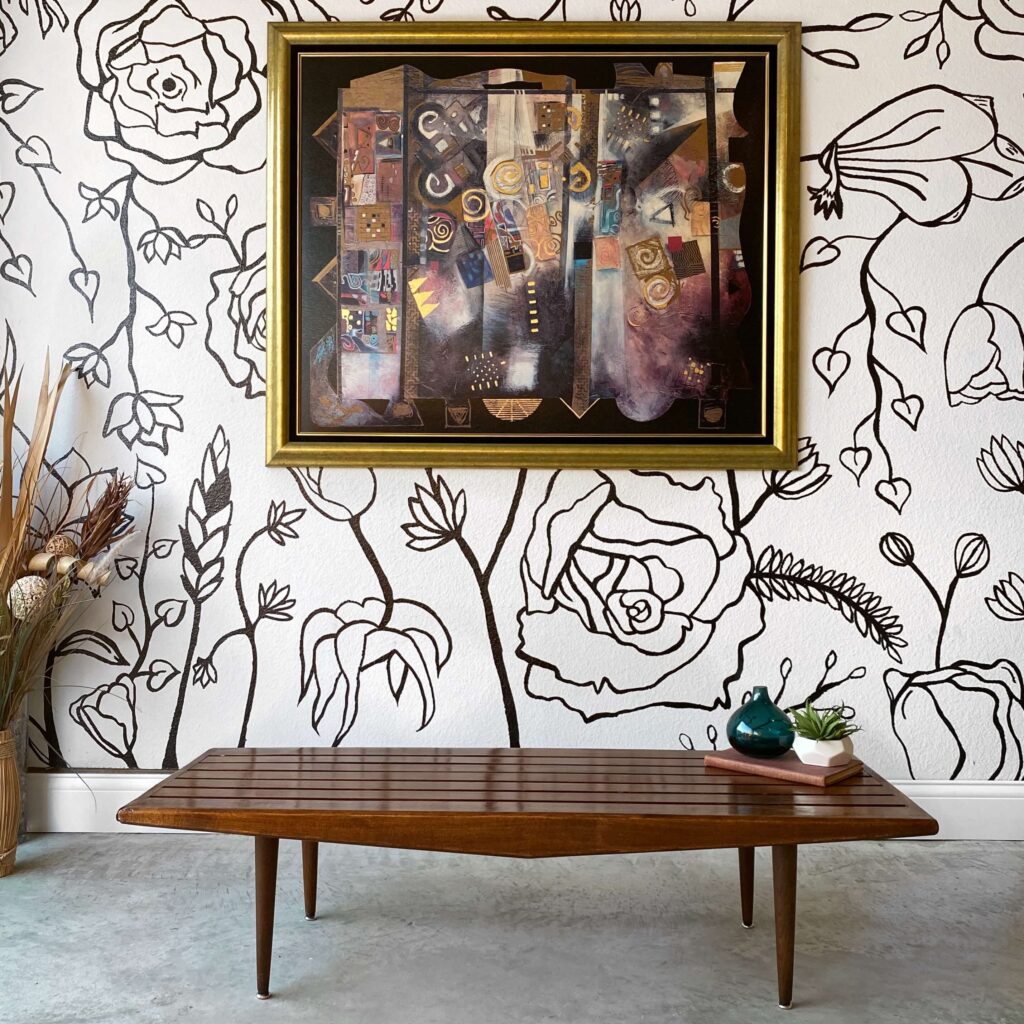
Could each of you explain your respective roles?
Mal: I’m Mal, and I wear many hats with Curated Haus. I do most of our research, which includes finding new product, identifying pieces and looking into pricing trends. I also style and photograph all our pieces for Instagram and Etsy. Design is sort of my wheelhouse. When we have pieces that have to be completely refinished or have parts that need to be color-matched, I handle that as well.
Marissa, my sister, is in charge of stripping and sanding pieces that need a lot of work, as well as any reupholstery we do. She also cleans up the pieces that don’t require as much work and helps me style.
Ronnie helps us with accounting, and he’s our heavy-lifter. If a customer needs something delivered or we need help moving things in and out of our workshop, I’ll get Ronnie to help.
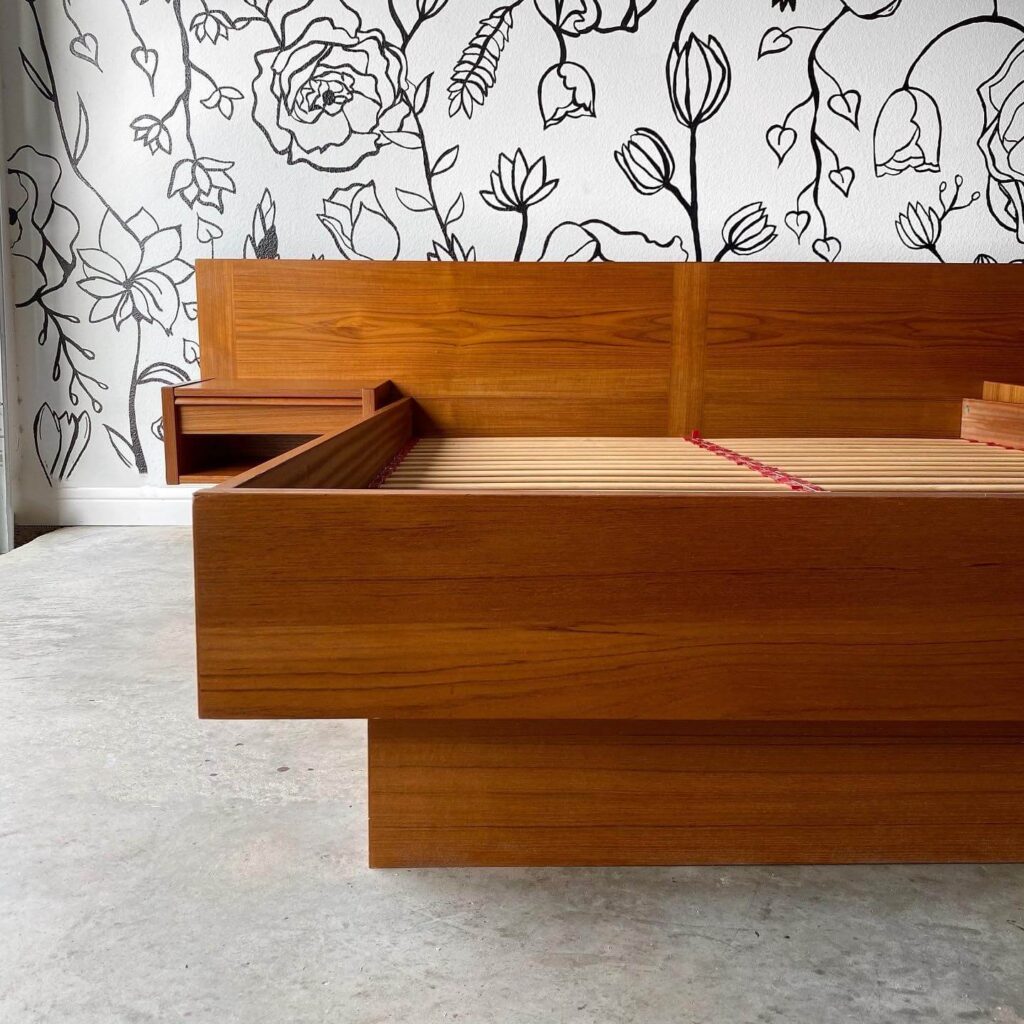
What got you started collecting/reselling vintage MCM furniture/decor?
Mal: So, we actually moved into a new house a few days before Texas locked down in March. Most of our furniture was from IKEA, and my kids were just destroying it. I wanted solid wood, higher-quality furniture, and I realized that I could find better quality vintage furniture for less money than I would spend on new furniture. It holds up better because the craftsmanship is just superior, and I love the natural wood grains so much.
My sister was working in retail at the time, and everything shut down. We got to talking and realized that we were finding a lot of great pieces for the house. Why not try flipping some of our finds to supplement income during the pandemic? Over the next few months, we gathered inventory like crazy. At the end of June, we officially launched Curated Haus on Instagram. Even though many businesses have reopened, we decided to put our energy into Curated Haus and see if we could make it work as a permanent source of income. So far, so good!
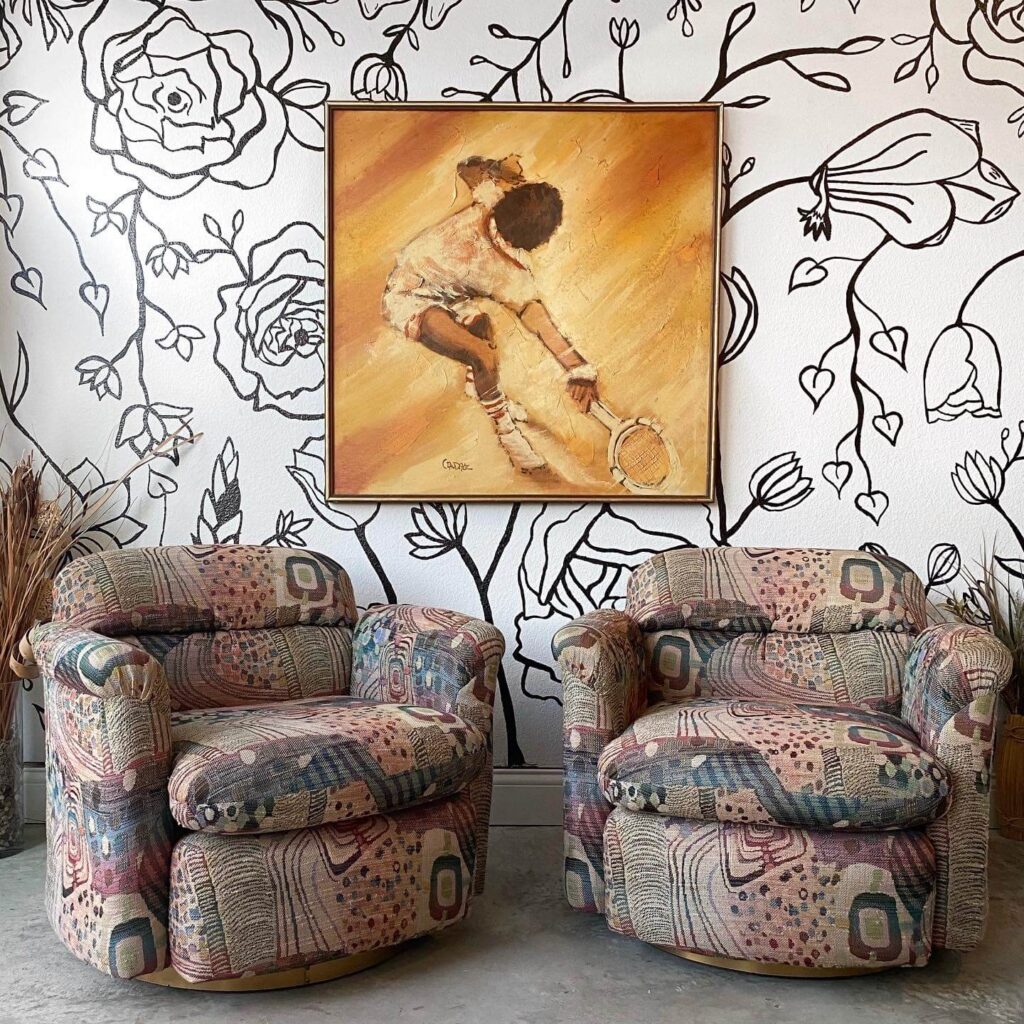
What draws you to Mid Century Modern?
Mal: I love the minimalist look, so the clean lines and subtle accents in MCM really speak to me. I also love that so many of the pieces we find have a story attached to them. We actually keep a collection of the random things we find in furniture, from old movie ticket stubs to report cards and even a collection of color slides of a family vacation!
Of course, you can’t beat the quality of MCM, either. These pieces are 50-70 years old, and they hold up better than some of the things I bought new last year. The style is so classic and timeless, too. Other design trends come and go, but MCM continues to be popular with people of all ages and in every region. It’s an era of furniture that has almost universal appeal.
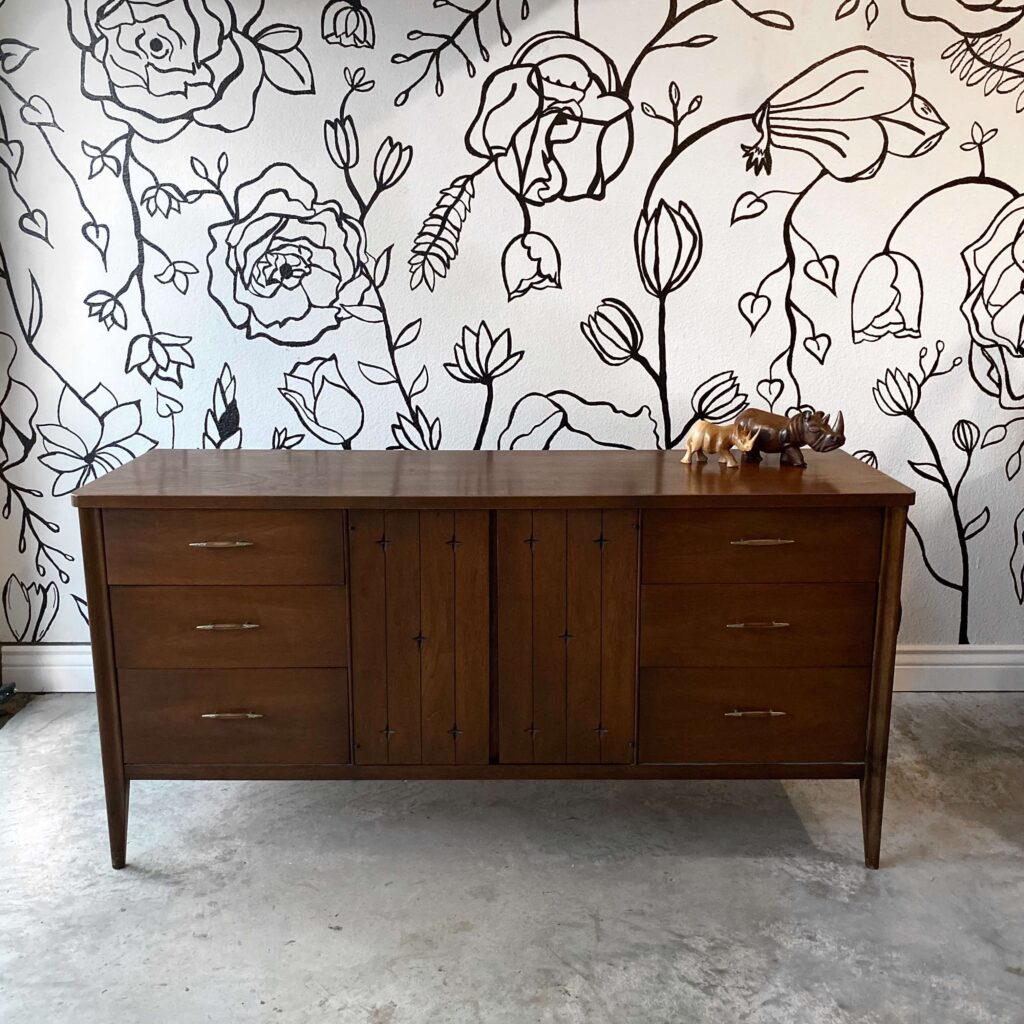
Do you have a favorite designer? What about a favorite piece you’ve encountered in your collecting?
Mal: Ronnie fell in love with this Wolfgang Hoffman style tubular loveseat we came across. The frame was chrome, and it had gorgeous leather cushions. He started doing research on it and found that it was produced in the 1930s. It was more Art Deco than Mid Century Modern, but a lot of our customers like to mix several styles, and it complements the MCM style really well. When it finally sold, Ronnie had a hard time letting it go.
It’s hard to tell what will sell sometimes, but our Curated Haus customers really love some of the Broyhill and Kent Coffey designs. For me, the best pieces are usually the most unique. Early on, we acquired a teak coffee table with a beautiful tile inlay by Gangso Møbler that I just loved.
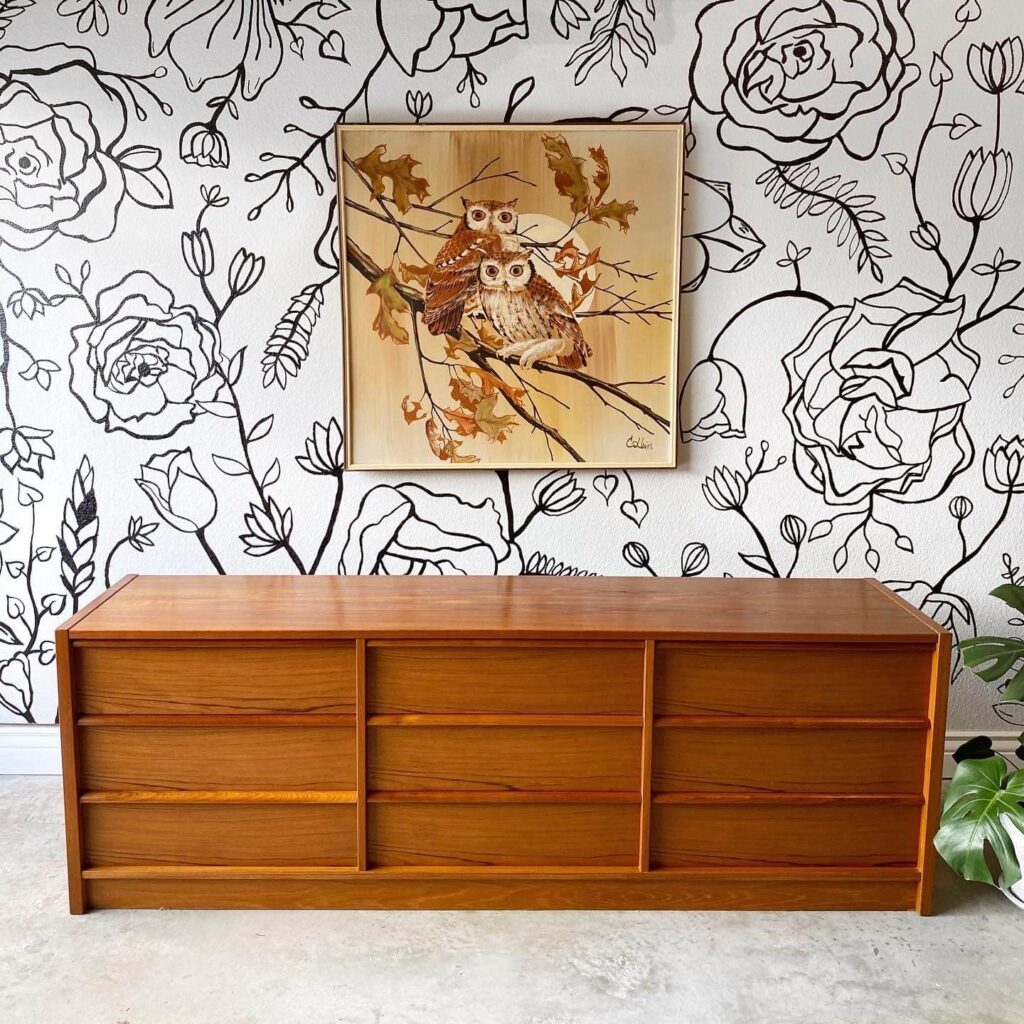
Where do you find these pieces?
Mal: We find our pieces for Curated Haus in all sorts of places. If we’re driving very far in any direction, we’ll look up antiques stores and flea markets. We also just keep our eyes out in small towns. Sometimes, you’ll pull up to a house with a huge stash right in the front yard.
Ronnie’s favorite picking adventure was a sort of barn sale a few hours from home. This guy had bought an abandoned storage facility, and he wanted to clear it out. The units hadn’t been touched since the 1980s, and everything was in disrepair. Imagine an episode of Hoarders, and that’s kind of what it was like. Ronnie just went for it, climbing over piles and using his phone as a flashlight. He got really excited about a set of Art Deco pieces, and any fear he had went out the window.
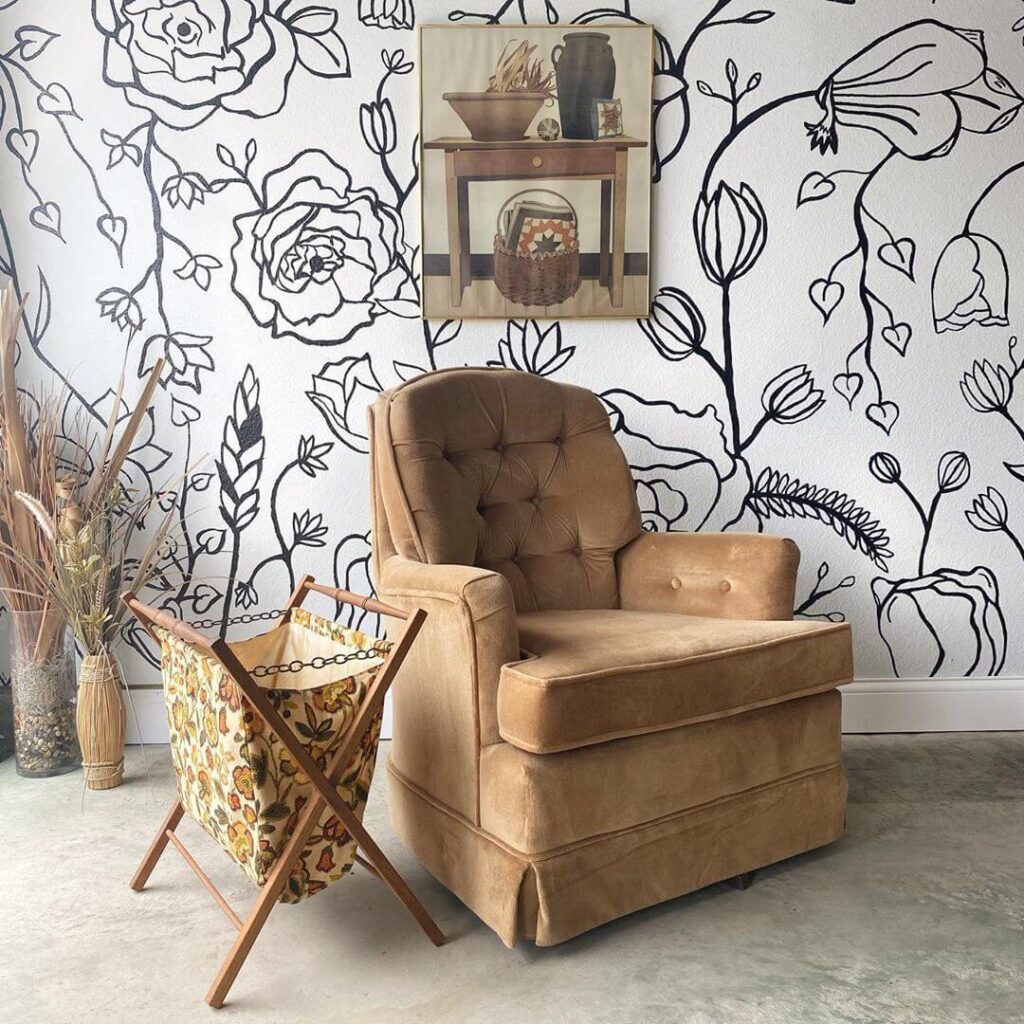
There’s a lot out there if you know how to hunt it down. Once, we were driving through a town in Oklahoma, and Marissa saw an enormous brass and glass etagere in the window of an abandoned flower shop. Part of our client base is really into 80s glam, so Marissa tracked down the owner using public information about the business and navigating a series of estranged family members. When she finally got in touch with the owner, he agreed to meet us at the shop. Imagine our surprise when he let us haul off not one but three matching etageres. The stories he told while we were breaking it all down and loading it up were the best part. When we’re out picking, it’s always the people we meet that make the trip.
How do you verify provenance?
Mal: For provenance, we mostly rely on legwork. A lot of mid century pieces aren’t marked, so we have to research specific elements of the piece to try and narrow down a maker. The more we research, the easier it is for me to identify the designer or region just because I’ve started to recognize little differences between designers. Certain makers, like Nathan, have very recognizable styles. For one bedroom set, we had a stamp that narrowed down the piece to a specific factory that ended up being a historical site in Texas.
Of course, some pieces do have markings that make tracing the maker and period fairly simple. Designers like Kent Coffey, Broyhill, Lane AltaVista, and Thomasville almost always mark their pieces. The harder part is the history of a given piece. Sometimes, we get long, interesting stories about a piece that has been in a family for decades. Other times, we rescue pieces from abandoned storage units or pick them up from individuals who find abandoned pieces when they purchase homes.
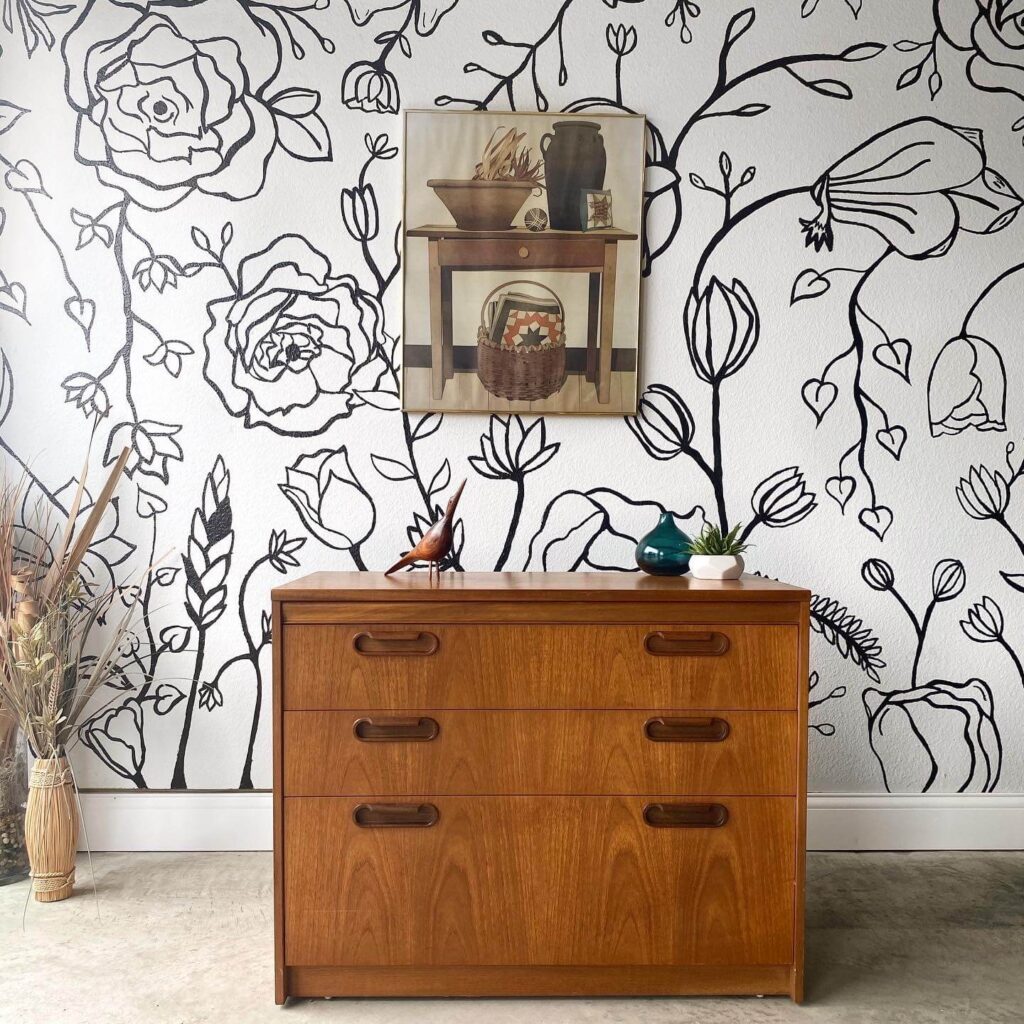
Do you ship pieces?
Mal: We ship a lot of our small pieces. Furniture and artwork can be more difficult. We’ve had quite a few people ask—some several thousand miles away. When you start to look into shipping prices, a lot of the time it’s just not worth it to the buyer unless they’re really set on a specific piece. We deliver a lot of the larger pieces, most locally, but we’re willing to drive a good distance for much less than most companies would charge to deliver our items. We’ve had customers drive in from cities all over Texas and even some from other states to pick up pieces they just had to have.
Tell us about your signature backdrop for your Curated Haus product photos.
Mal: I actually drew the design onto the wall freehand. We wanted something for Curated Haus that would stand out and pop when our customers are scrolling on Instagram. It’s become so recognizable that we actually have customers reach out if users try to repost our photos. They see the backdrop and know instantly that it’s us! I even had to post a tutorial about the wall to our Instagram Highlights because so many customers want to know how I did it!
Interested in selling? Learn everything you need to know about selling vintage online.
And of course, don’t forget to follow us on Instagram, Facebook and Pinterest for more Atomic Ranch articles and ideas!












